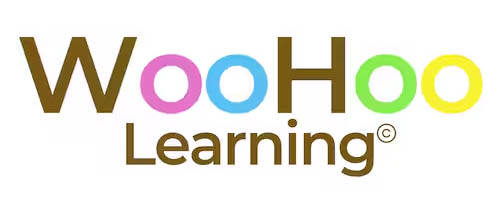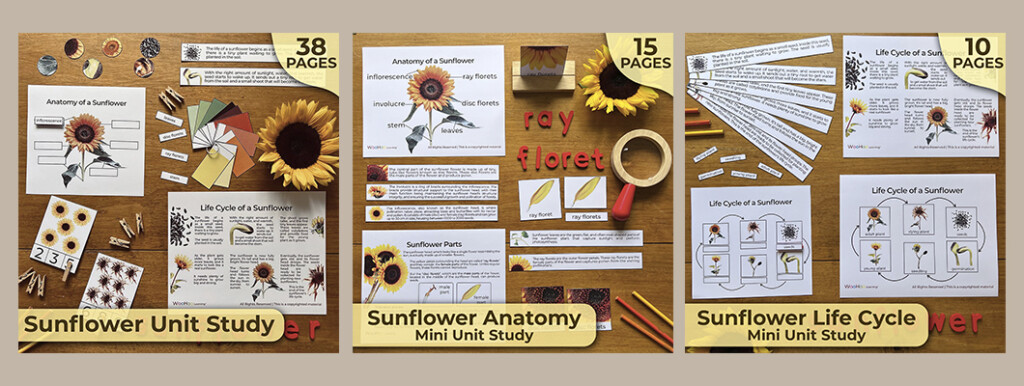Sunflowers are the largest flowering plants in the world, and that makes them very special. Additionally, their shape and striking colors also make them one of the most beautiful flowering plants. For this reason, learning about this precious plant can be a very fun project for our students. Not only can it be very beneficial for learning, but it can also help them develop curiosity about elements of nature, admire the beauty of plants, observe and form hypotheses about flowers, and much more.
If you, like me, are passionate about the Montessori methodology, its approach to teaching, and its learning environment, you’ll love working with my sunflower unit. The way I use my units with my students is very experiential—I bring real objects into the classroom so they can touch, observe, and explore them. This approach, which focuses on the child, encourages learning through experimentation and discovery. Next, I’ll explain how to use this unit with your students.
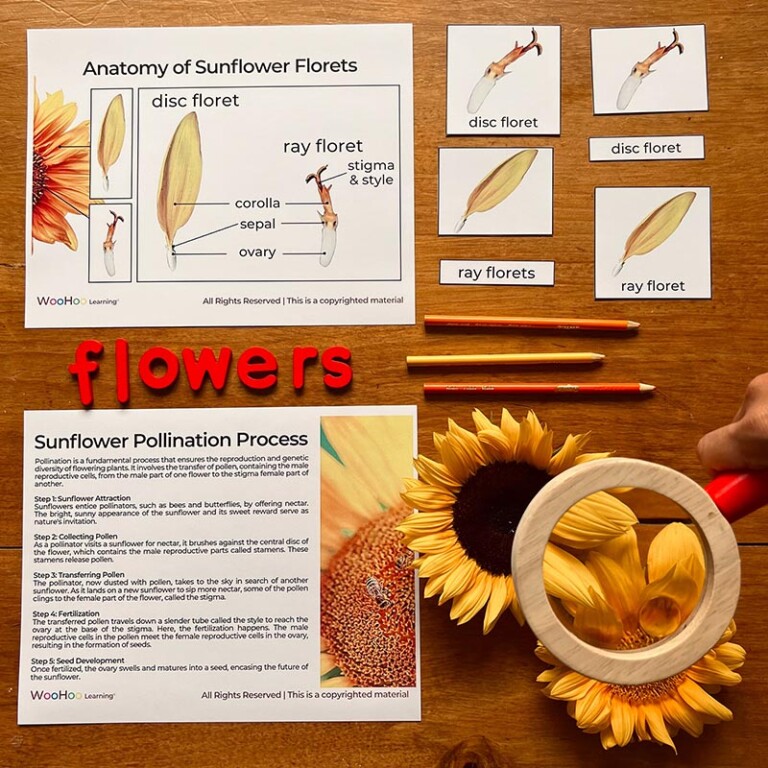
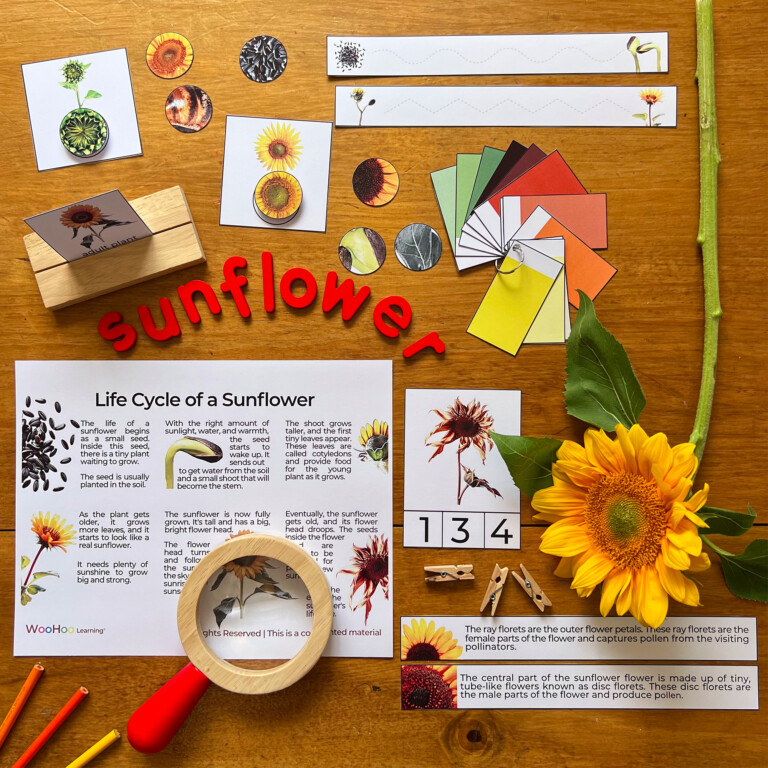
First, I recommend starting with the sunflower anatomy section. If possible, bring a sunflower (or more) into your class so children can examine it up close—touch it, explore it, and engage with it. Before sharing any information, introduce the sunflower with some guiding questions: “Do you know what this is?”, “Do you think this is a flower or a plant?”, “Could you name some parts?”.
After the hands-on exploration of the sunflower, you can move on to learning about its different parts: inflorescence, ray florets, disc florets, involucre, stem, and leaves. The labeled poster will be a great tool to introduce these parts. Then, you can use the 3-part cards to help students work on vocabulary and specific definitions.
"At some given moment it happens that the child becomes deeply interested in a piece of work; we see it in the expression on his face, his intense concentration, the devotion to the exercise"
The Discovery of the Child, Maria Montessori
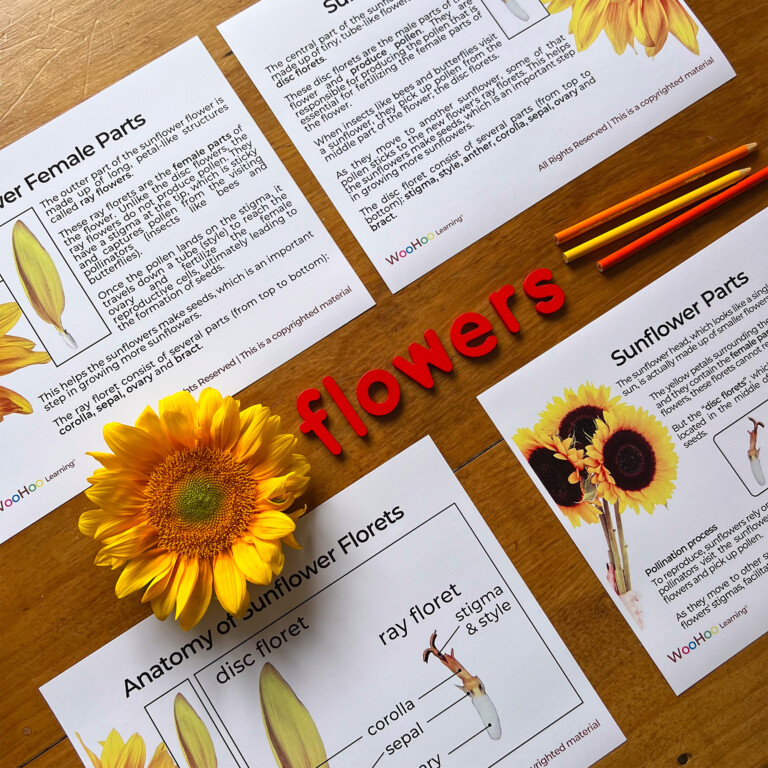
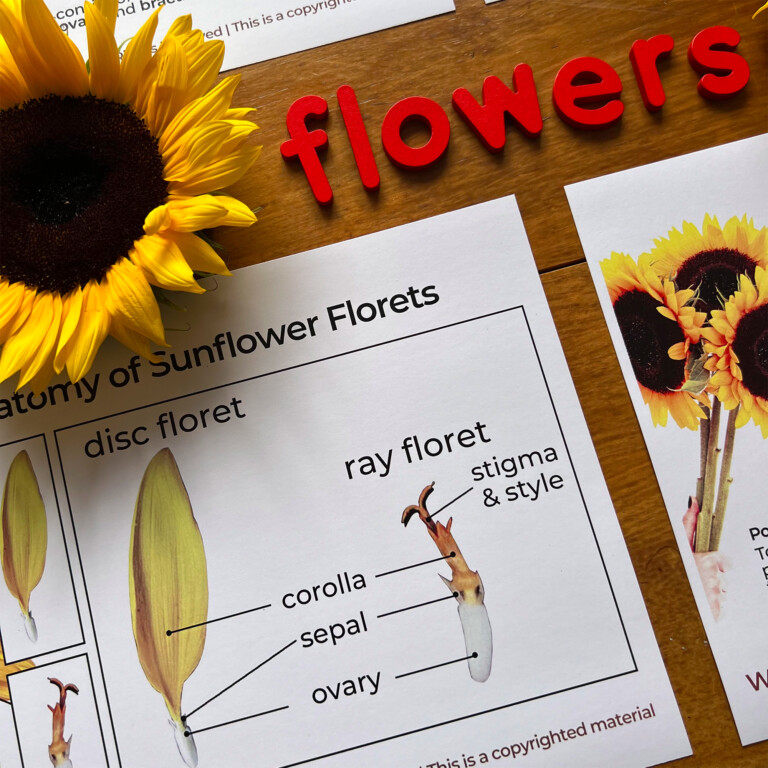
When children are familiar with the sunflower and its anatomy, it’s time to delve into the life cycle of the sunflower. You can start this section by asking questions like, “Where does this flowering plant come from?”, “Was it always like this, or has it transformed?”. These questions will help students prepare to learn about the six stages of the sunflower’s life cycle: seeds, germination, seedling, young plant, adult plant, and dying plant. To support this learning, you can use the definition cards, the 3-part cards, and the 4-part cards with definitions.
Here are some of the elements I’ve used to accompany this unit and their purchase links, in case you’re interested:
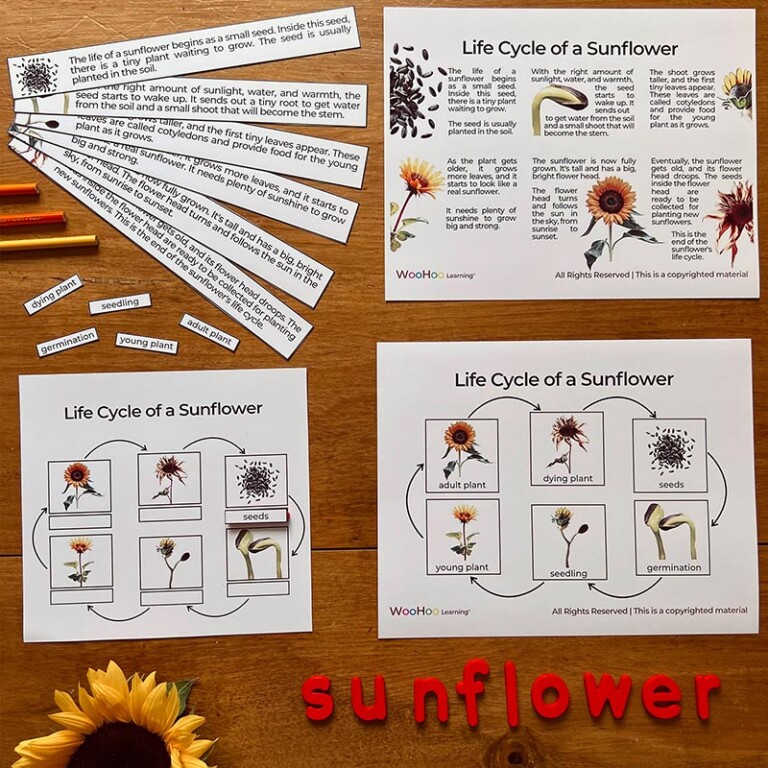
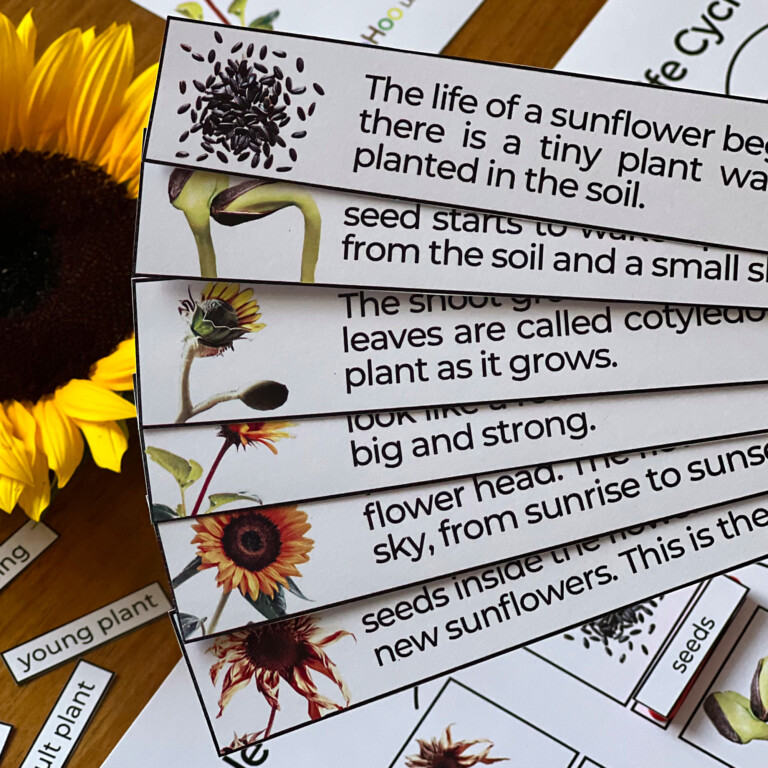
Once our students have learned about the anatomy of the sunflower, and the life cycle of the sunflower, we can move on to activities included in the unit or explore more about this flowering plant. For instance, you could interesting facts about sunflower, or work with the cut-and-paste activities.
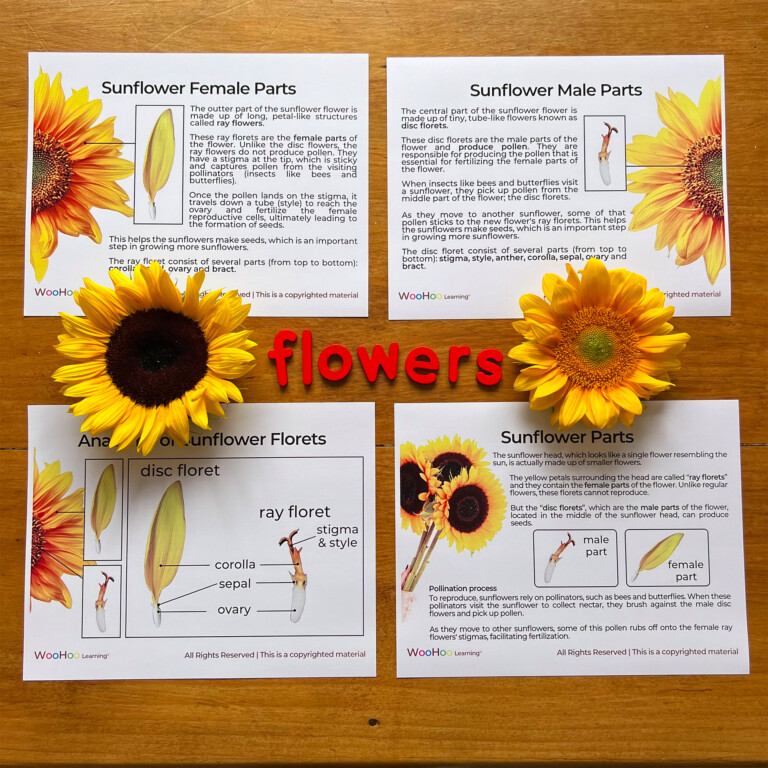
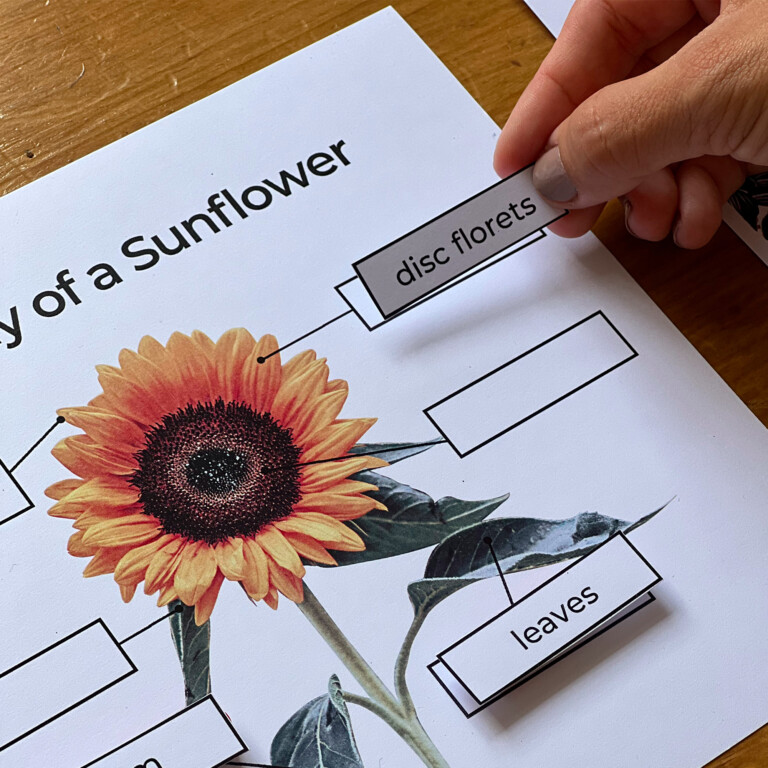
If you’re interested in purchasing my sunflower unit study, you can find direct access to it below. If you only want a part of the unit, don’t worry, that’s also possible. In total, there are 3 different units available: the complete sunflower unit, the sunflower life cycle unit, and the sunflower anatomy unit.
The complete sunflower unit consists of 38 pages and contains all kinds of information about sunflowers, including a color pantone, interesting facts, life cycle, anatomy, and more. The sunflower anatomy unit has 15 pages and includes posters, 3-part cards, vocabulary cards, and activities. Finally, the sunflower life cycle unit has 10 pages and includes posters, 3-part cards, vocabulary cards, and activities.
*If you feel more comfortable making your purchase on well-known platforms, you can also find my products on other e-commerce sites. Here are the links to my Etsy store and my Teachers Pay Teachers store.
